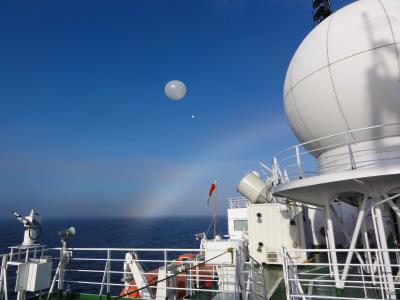Understanding the Mystery of Clouds Over the Ice-free Arctic Ocean
Understanding clouds in the Arctic is a key issue in modeling the Arctic climate and predicting the results and impacts of the changing climate system. One of the main difficulties in understanding Arctic clouds is the deficiency of observations to compare to atmospheric and earth system models. This study uses the atmospheric observations from the Japanese Research Vessel Mirai in comparison to simulations from six regional climate models. The results provide insights to the handling of clouds and radiation processes by the regional climate models over the ice-free Arctic Ocean.
The results provide a direct understanding of what the regional climate models (RCMs) are simulating well with clouds and radiation processes and what they are not. This research cruise and model comparison was focused over the ice-free ocean during a seasonal transition time of the year. For example, extensive differences were found between RCMs in distinguishing between ice clouds and liquid clouds. The comparison of the RCMs to the Mirai observations provides a truth for which the RCMs can be modified to achieve better simulations.
An evaluation of the performance of six regional climate models (RCMs) in simulating clouds and radiative processes was completed through a comparison to observations. The measurements were taken aboard the Japanese Research Vessel Mirai on a research cruise of the ice-free Arctic Ocean in September 2014. The stationary point observations collected on the Mirai include measurements of the surface atmospheric state, surface radiative fluxes, profiles of the atmosphere by radiosondes, and cloud measurements. The six RCMs, with a total of nine simulations, were evaluated for their ability to represent the clouds and radiative processes as indicated by the observations. Most RCMs reproduced the time series of the near-surface meteorological parameters but there were issues discovered regarding the clouds and surface energy budget. The results highlight areas in the RCMs that can be improved to better represent and understand the Arctic air-ice-sea coupled system in the changing climate. Such improvements will be key to produce better short-term numerical weather prediction of the Arctic, and for long-term simulations and studies on the changing Arctic climate system.

